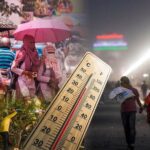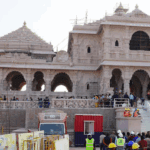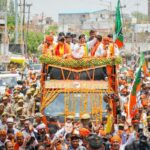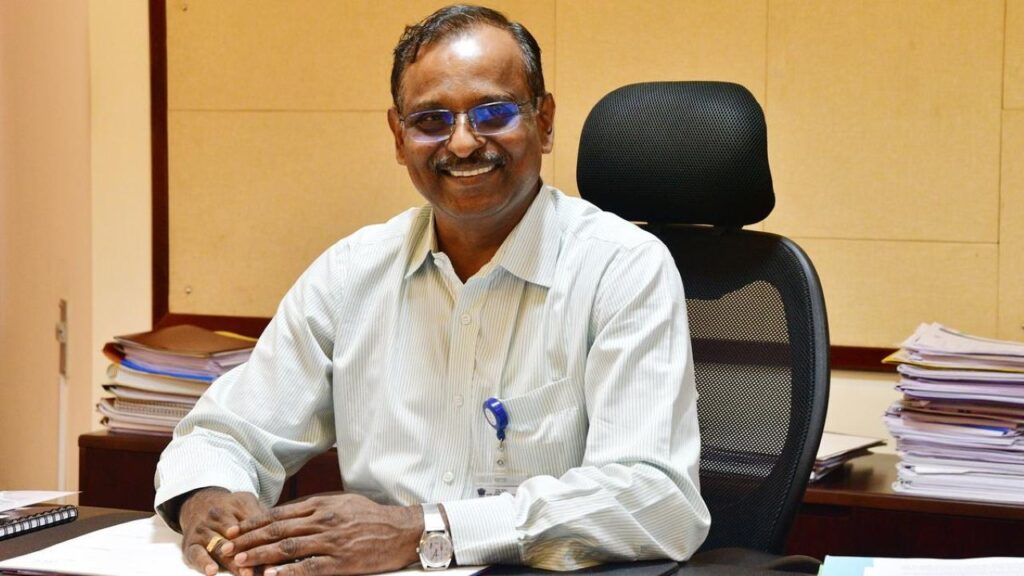Nearly 600 people greeted him, surprising him, as they had gathered to celebrate his achievements and the successful completion of multiple missions.
Before taking over as the chairperson of India’s space agency, Dr. V. Narayanan visited the temple in his hometown, a small village called Melakattuvilai in Tamil Nadu’s Kanyakumari district.
Coming from a farming background, he studied using kerosene lamps until the ninth standard, when his home was first electrified.
He excelled in all his exams and went on to become a key figure in developing the country’s cryogenic engine program from the ground up, contributing significantly to several critical space missions.
His efforts continue to power India’s space missions, making him an integral part of the nation’s space exploration success.
Also Read : Push-Pull Technology in Indian Railways: Transforming the Future of Train Travel
Humble Beginnings to Leading ISRO’s Cryogenic Engine Program and Future Missions
His team holds the record for the fastest development of a cryogenic engine, from the initial design to its first flight.
This engine now powers India’s heaviest launch vehicle, LVM3, and will also help send Indian astronauts to space.
On the day he would have marked seven years as the director of ISRO’s Liquid Propulsion Systems Centre (LPSC), Narayanan spoke about his journey and the space agency’s key upcoming missions.
I come from a modest background, and it was a great blessing that my parents supported my education when most children in my village would drop out much earlier.
Also Read : Decoder: What a peaceful transition of power looks like
From Academic Success to a Tough Career Decision
I was performing well in school and even secured the top rank. At that point, my father sought advice from someone on what I should do next, and they suggested that a diploma from a polytechnic college would almost guarantee me a job.
After starting the course, I realized that I should have pursued an engineering degree instead. However, I kept studying and once again secured the top rank.
I was fortunate to receive a campus job offer, but I faced a tough decision: should I take the job or continue my education.
While my father encouraged me to keep studying, I chose the job due to financial constraints, though I felt disappointed by the decision.
Also Read : Elon Musk’s Daughter Reacts to Nazi Salute Claims
Balancing Education and Career: A Pivotal Decision
I was just trying to get a government job. I started out at TI Cycles, then Madras Rubber Factory, and finally Bharat Heavy Electricals Limited, before joining ISRO.
Once I joined ISRO, however, I thought I must complete my engineering at the earliest. By God’s grace, I was able to complete my PhD from IIT Kharagpur and start my journey with the cryogenic programme.
You have worked with the biggest rockets in India. Now, we are working on an even bigger Next Generation Launch Vehicle (NGLV) and the cabinet approved a new launch pad for it recently. Could you tell us about the significance of both.
Also Read : Saif Ali Khan’s Bhopal property case: What is ‘Enemy property’?











More Stories
Indian Army: First peaceful night along Line of Control in days
मौसम: उत्तर-पश्चिम प्रदेश व मध्य भारत में बारिश, पूर्वी भारत में 15 मई तक लू
अयोध्या: राम मंदिर परिसर में 14 देवालयों पर पांच जून को होगी प्राण प्रतिष्ठा, 101 आचार्य कराएंगे ये अनुष्ठान